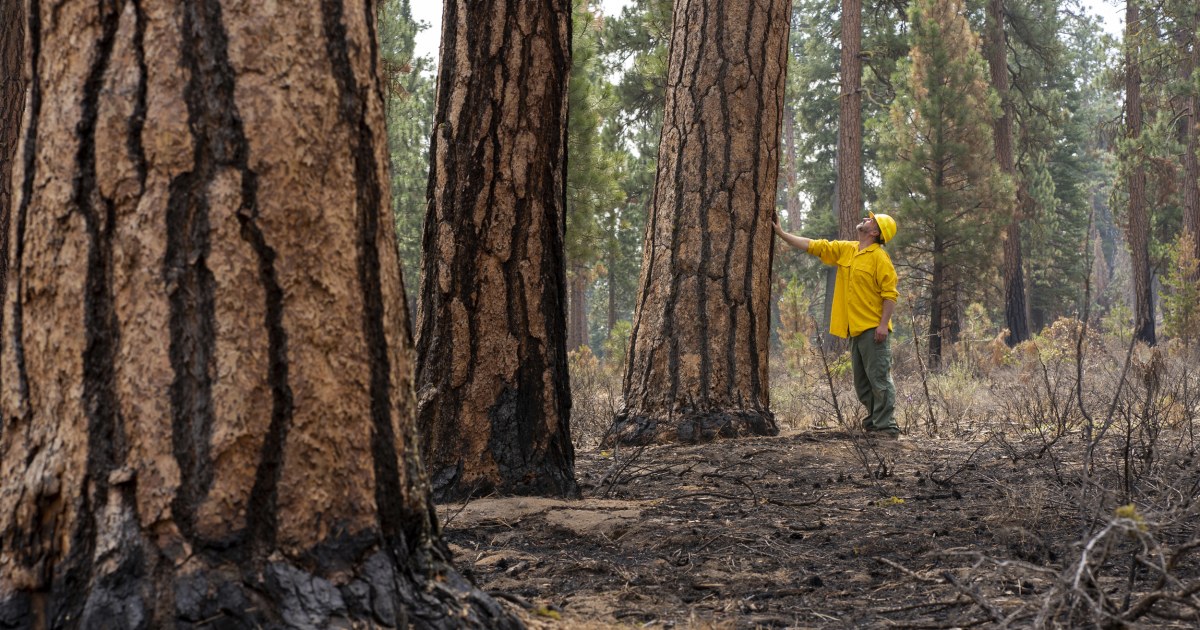
In Oregon, where more than 413,000 acres were scorched by the Bootleg Fire and nearly 200 homes destroyed, an initial assessment of land previously treated with controlled burns and tree thinning suggests that these efforts paid off and could hold valuable lessons for better forest management.
The treated lands appeared to have better withstood wildfire, burning closer to the ground and leaving tree crowns green. In areas not previously treated, the Bootleg Fire incinerated 200- to 400-year-old pines from top to bottom, creating a moonscape of charred and ashy soil that will take years to heal.
These early findings add to a growing body of research about how to make wildfires less explosive by thinning undergrowth and allowing forests to burn periodically instead of extinguishing every flame.
“This never should have happened,” said Craig Bienz, program director for the Sycan Marsh Preserve. “The use of fire never should have been discontinued. We should have always continued to manage our forests to sustain them in the long term.”
The Fremont-Winema National Forest stretches across 2.3 million acres of wilderness in southern Oregon. It once belonged to the Klamath Tribes, comprising the Klamath, Modoc and Yahooskin-Paiute peoples, who signed a treaty in 1864 ceding much of their ancestral land to the federal government. The hope was to retain some of that land for hunting, gathering and water rights for future generations, but the Klamath Tribes lost control of their portion in the 1950s.
In 2011, the Forest Service and the Klamath Tribes entered into a partnership to treat forested lands using modern science and Indigenous practices. The Sycan, which translates to “level grassy place” in the Klamath language, preserve is part of a larger historic site for the Klamath people and remains an important link between the new world and the one that existed before European settlers arrived.
Over time, the forest has deteriorated because of an over-reliance on fire suppression, which allowed small trees and undergrowth to spread and cause an imbalance in the ecosystem. That imbalance can contribute to higher intensity wildfires that burn longer and hotter rather than make forests healthier, said Steve Rondeau, Klamath Tribes natural resources director.
The ongoing research is leading back to the “native way of doing things,” according to Rondeau.
“The goal isn’t necessarily to go back to how things used to be, but to look back and take lessons from how things were different then and how they have changed over time,” he said.
Source: | This article originally belongs to Nbcnews.com










